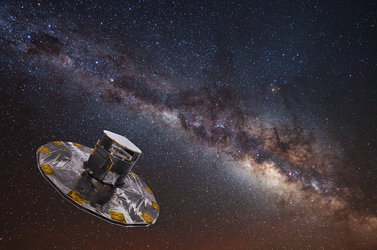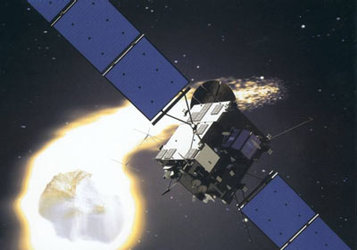How Rosetta arrives at a comet
After travelling nearly 6.4 billion kilometres through the Solar System, ESA’s Rosetta is closing in on its target. But how does a spacecraft actually arrive at a comet?
The journey began on 2 March 2004 when Rosetta was launched on an Ariane 5 from Europe’s Spaceport in Kourou, French Guiana.
Since then, Rosetta has looped around the Sun five times, picking up speed through three gravity-assist swingbys at Earth and one at Mars, to enter an orbit similar to that of its destination: comet 67P/Churyumov–Gerasimenko.
This icy target is in an elliptical 6.5-year solar circuit that takes it from beyond the orbit of Jupiter at its furthest point, and between the orbits of Mars and Earth at its closest to the Sun.
Rosetta’s goal is to match the pace of the comet – currently some 55 000 km/h – and travel alongside it to within just 1 m/s between them, roughly equivalent to a walking pace.
Since early May, Rosetta’s controllers have been pacing it through a tightly planned series of manoeuvres designed to slow its speed with respect to the comet by about 2800 km/h, or 775 m/s, to ensure its arrival on 6 August.
Flight dynamics experts play crucial role


Access the video
ESA’s experts are playing a crucial role, having worked extensively behind the scenes to develop a series of ten orbit-correction manoeuvres that use Rosetta’s thrusters to match the spacecraft’s speed and direction with that of the comet.
“Our team is responsible for predicting and determining Rosetta’s orbit, and we work with the flight controllers to plan the thruster burns,” says Frank Dreger, Head of Flight Dynamics at ESA’s Space Operations Centre, ESOC, in Darmstadt, Germany.
The burns were carried out every two weeks in May and June and, after a short test, the three subsequent manoeuvres were some of the longest ever performed by an ESA spacecraft – exceeding seven hours.
These first burns dramatically reduced Rosetta’s speed with respect to the comet by 668 m/s of the necessary 775 m/s required by 6 August, when Rosetta will ‘arrive’ at a distance of just 100 km from the comet.
Throughout July, the burns were made on a weekly basis, and will culminate in two short orbit insertion burns set for 3 and 6 August.
Obeying orbital mechanics
“If any glitches in space or on ground had delayed the recent burns, orbital mechanics dictate that we’d only have had a matter of a few days to fix the problem, replan the burn and carry it out, otherwise we would have run the risk of missing the comet,” says Trevor Morley, a flight dynamics specialist at ESOC.

The team’s job is far from over once Rosetta arrives. As the pioneering craft draws ever nearer, the physical properties of the comet will become increasingly important for determining Rosetta’s eventual path around it.
“On top of a good physical model of the comet nucleus, we also need a good ‘coma’ model that tells us the density and velocity of particles being emitted from the comet,” says fellow specialist Frank Budnik at ESOC.
“We expect the spacecraft to be affected by the surrounding coma in addition to the comet body’s gravitational pull, and these all play into calculating the orbits and the thruster burns required to keep Rosetta near the comet.”
As the comet moves closer to the Sun during 2015, it will heat up and become more active, throwing out increasing quantities of gas and dust. Combined with the low gravity, this ever-changing activity will make for hugely challenging operations, trying to keep the spacecraft close enough to the comet to do good science, while ensuring that it remains safe.
But first: save the date for 6 August, when Rosetta is set to become the first spacecraft in history to attempt to rendezvous with a comet.
Access an extended version of this article via ESA's Rosetta blog.














 Germany
Germany
 Austria
Austria
 Belgium
Belgium
 Denmark
Denmark
 Spain
Spain
 Estonia
Estonia
 Finland
Finland
 France
France
 Greece
Greece
 Hungary
Hungary
 Ireland
Ireland
 Italy
Italy
 Luxembourg
Luxembourg
 Norway
Norway
 The Netherlands
The Netherlands
 Poland
Poland
 Portugal
Portugal
 Czechia
Czechia
 Romania
Romania
 United Kingdom
United Kingdom
 Slovenia
Slovenia
 Sweden
Sweden
 Switzerland
Switzerland




































